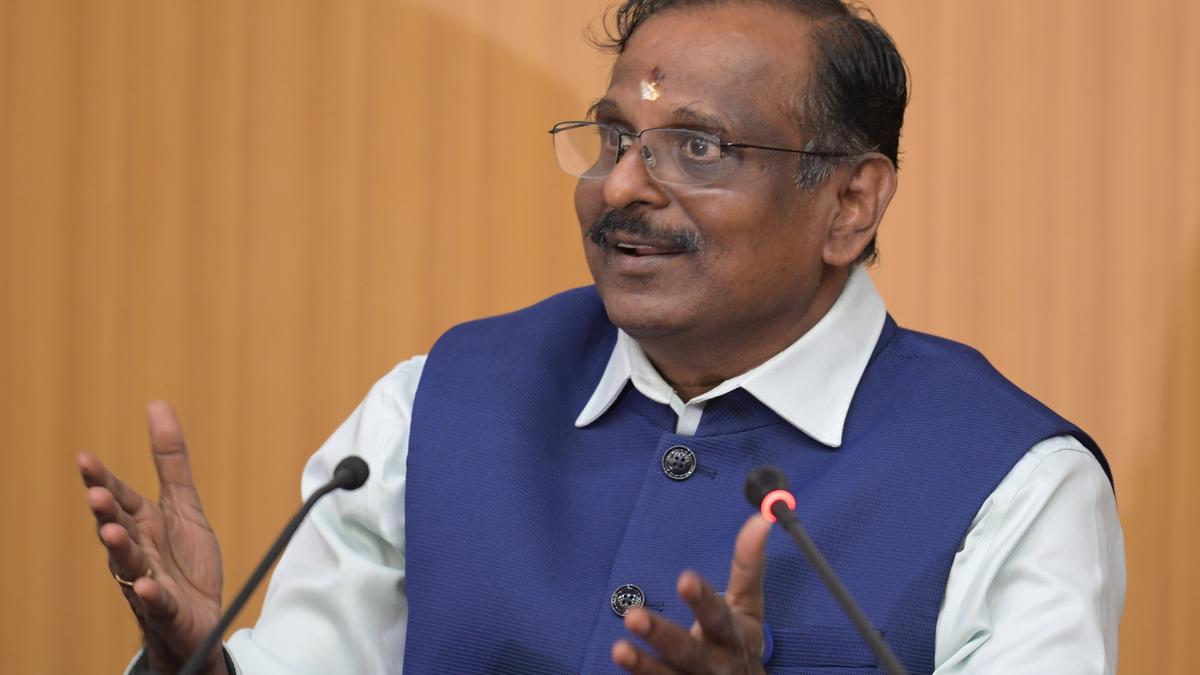
Where is ISRO heading Premium
The Hindu
Indian space programme's evolution, challenges, and future prospects, including ISRO's role, commercialisation, and private sector involvement.
Only three decades ago, the Indian space programme was a diminutive affair, dominated by the newfound successes of the Polar Satellite Launch Vehicle (PSLV) and a then-fledgling clump of communications satellites. Today, the programme is a large tree with a flourishing canopy. There is a slew of ongoing projects accompanied by projects being ideated, developed, tested as well as retired.
Also Read:Indian space programme breaks into 2025 on ‘mission mode’
The Indian Space Research Organisation (ISRO) — employer of several thousand engineers, scientists, and administrators — is now accompanied by IN-SPACe, a new nodal agency to oversee and enable private space enterprises’ activities, and NewSpace India, Ltd., to manage commercial launch commissions and commercialise Indian space technologies. ISRO’s spaceport in Andhra Pradesh has expanded to two launch pads while a second port is under construction in Tamil Nadu. Its PSLV rocket is likewise joined by five others — three operational and two in the works — with bespoke features to meet specific civil and national needs while serving commercial markets when opportunities arise.
ISRO operates more than 50 satellites in earth orbit and has launched more than 400 in commercial missions paid for by foreign governments and companies. It has also hoisted four missions to the moon, one to Mars, two space telescopes, and a solar physics probe. Missions in the near future include a synthetic aperture radar satellite co-built with NASA, more interplanetary missions, an orbital space station, and of course human spaceflight.
Its experts are designing next-generation engines (especially the SCE-200), green(er) fuels, and high-performance materials. The organisation is currently transferring SSLV and PSLV manufacturing to industry while government reforms from 2019 invited private enterprises to build and operate virtually any technology.
Against the backdrop of India’s history, a national space programme of this magnitude is by all means very successful. ‘Success’ here refers to the programme’s ability to plan and execute longer-term projects with crore-rupee budgets, coordinate activities across multiple centres, manage procurement, logistics, and accounts with industry contractors, and balance political ambitions and public expectations. Unfortunately, neither ISRO nor the programme has the luxury of having their efforts vis-à-vis spaceflight, space exploration, and commercialisation judged only by the yardstick of how far India alone has come.
The fact is the Indian space programme can take great strides and still remain uncompetitive with the other countries belonging to the same elite club to which it has repeatedly claimed to belong. While the U.S. and Russia (including the erstwhile USSR) had a head start of many decades, China, Japan, and Europe for a long time enjoyed more funding, technological sophistication or both.













